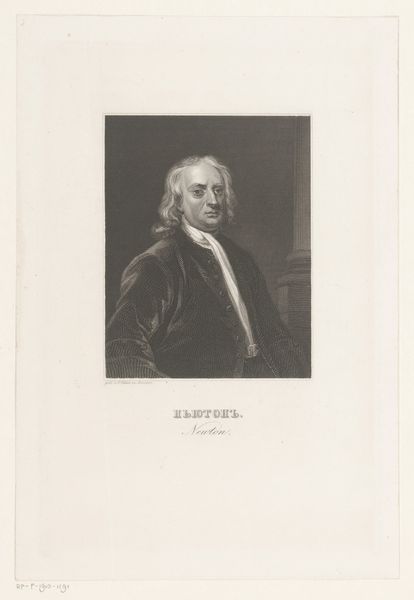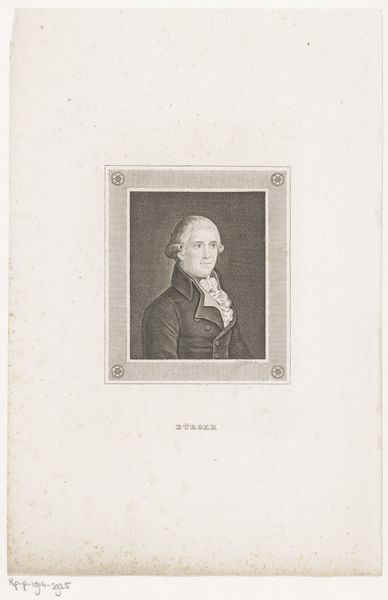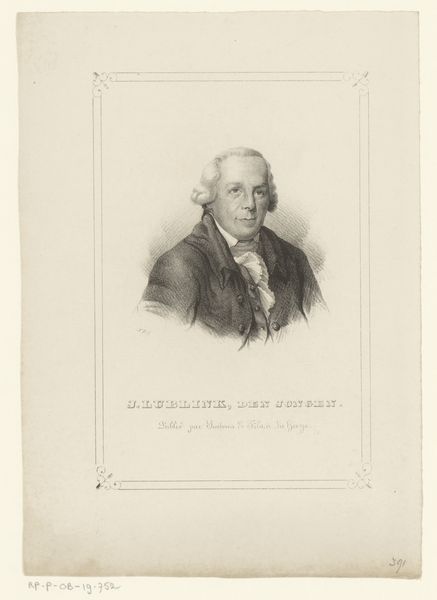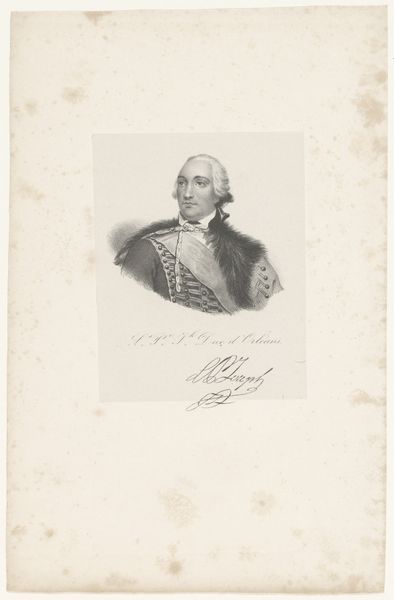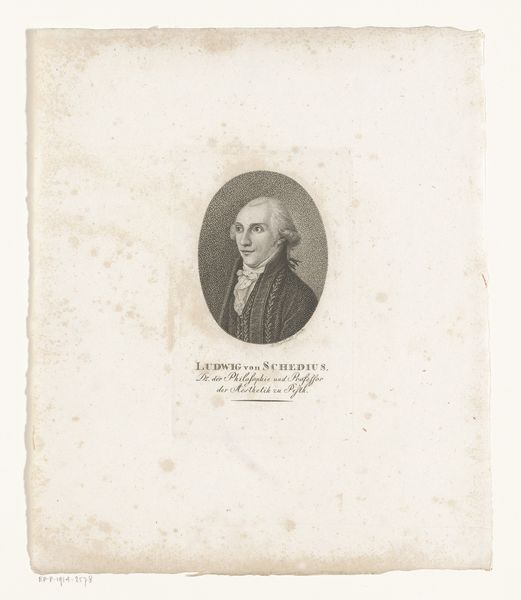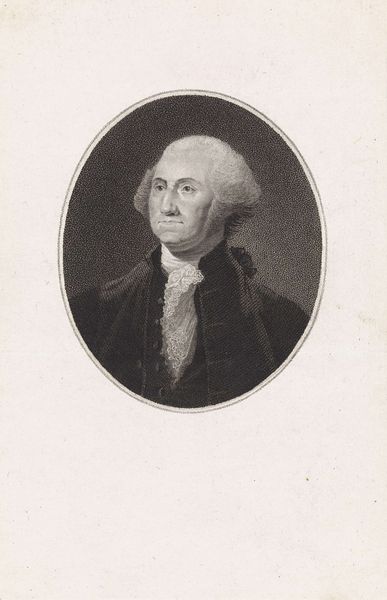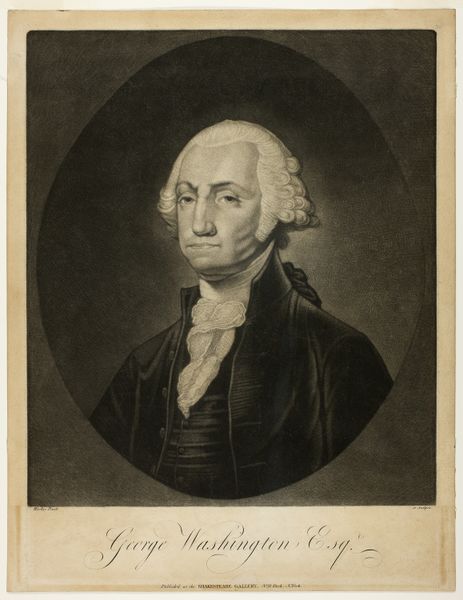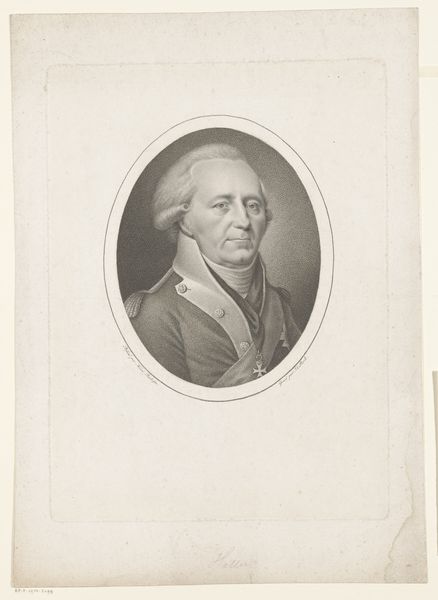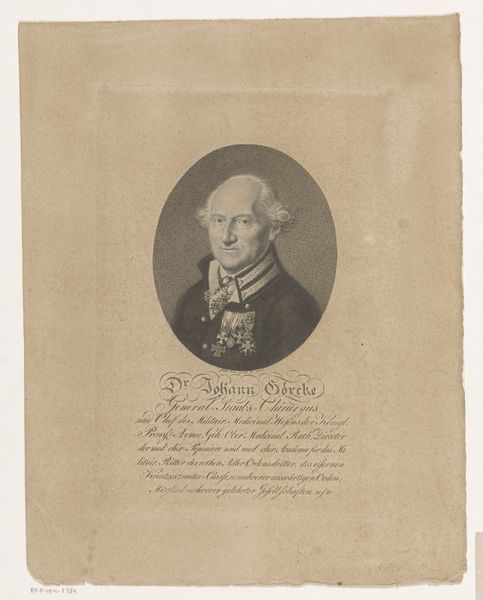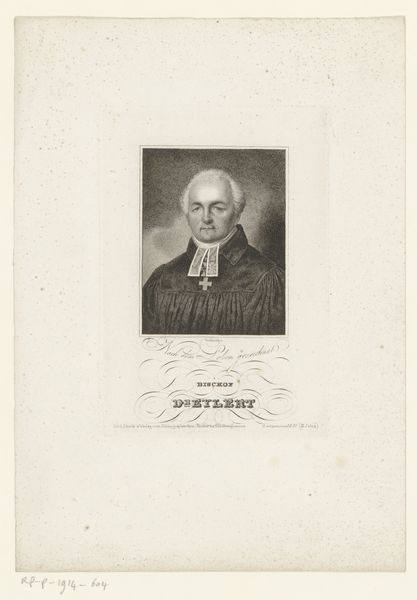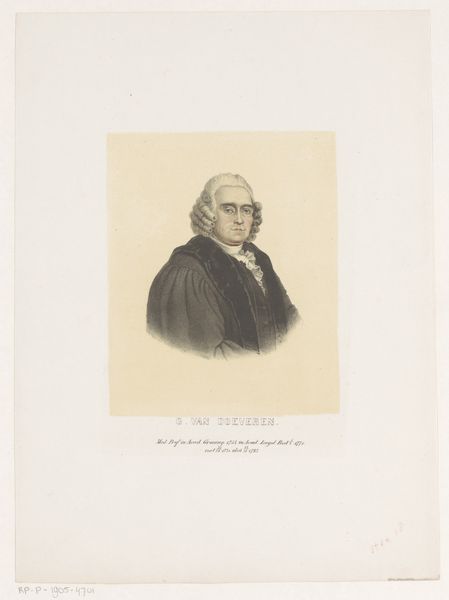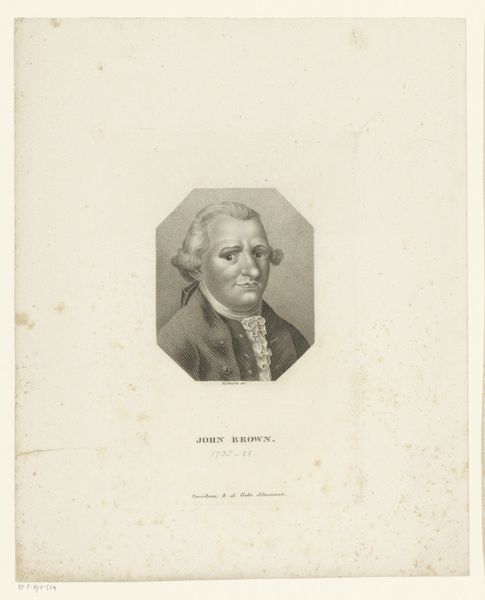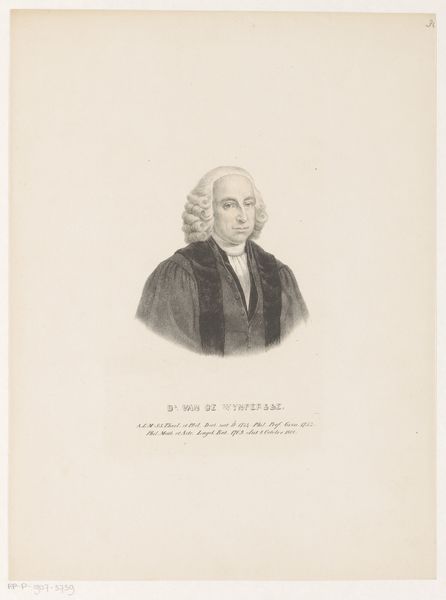
paper, engraving
#
portrait
#
neoclacissism
#
aged paper
#
old engraving style
#
paper
#
history-painting
#
academic-art
#
engraving
#
realism
Dimensions: height 278 mm, width 222 mm
Copyright: Rijks Museum: Open Domain
Curator: Upon entering the gallery, one immediately encounters this intriguing engraving, dating back to the period of 1805-1844: Hermann Hirsch Pinhas’ "Portret van Frederick William Herschel," held here at the Rijksmuseum. Editor: My initial impression is one of somber dignity. The limited tonal range creates a muted, almost melancholic mood. He’s clutching something that appears to be an astronomical diagram. It definitely situates him as an intellectual figure of the time. Curator: Absolutely. This engraving, rendered on paper, epitomizes Neoclassical portraiture, which deliberately positions figures of note in a classical, almost timeless style. The work obviously highlights Herschel’s contribution to astronomy; note, too, the meticulous rendering of the fur trim and the frilled shirt, suggesting luxury. The artistic process elevates the materials, really. Editor: Agreed, yet this also serves to underscore the hierarchical structures of 19th-century society. Herschel's class status is clearly communicated via this careful rendering of fabric, a commodity accessible only to some. And it's important to remember, Herschel wasn't born into wealth—his rise through the ranks of science is a social commentary in itself, especially given the limited opportunities for advancement for marginalized groups at the time. How might women or people of color have viewed a man of science being painted in a position of prestige, in those years? Curator: That's astute. By showing Herschel in a manner reserved for the elite, it is in itself suggesting an upward shift in the status of scientists, perhaps influencing future production and consumption patterns. Think of it this way: this portrait and others like it were also tools for fashioning ideals for masculinity through commissioned images for bourgeois and aristocratic families and collections. Editor: Right, this portrait does more than just document Herschel's existence. It actively participates in constructing a visual narrative that promotes his legacy and indirectly perpetuates specific social ideals. A great intersectional tool to understanding gendered concepts. Curator: Well, thinking about this work really lets one look at history’s intersectionality of artistic techniques and material realities, something often overlooked when examining artistic achievements, and the ways value can be conveyed by focusing attention on both scientific knowledge and social standing. Editor: Indeed, considering the layers of meaning and implication of this seemingly simple image provides rich insights into 19th-century society.
Comments
No comments
Be the first to comment and join the conversation on the ultimate creative platform.
